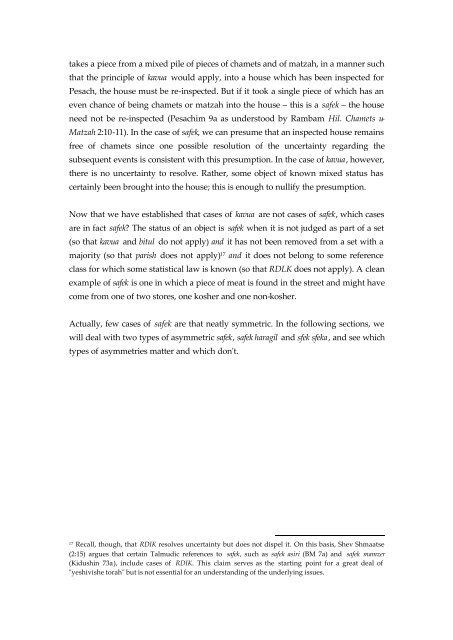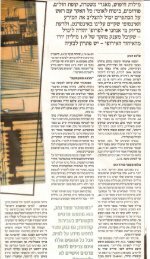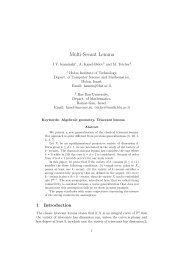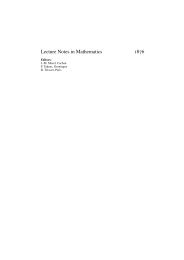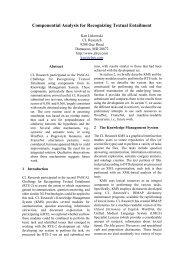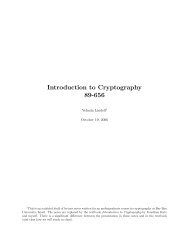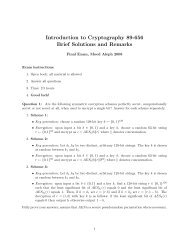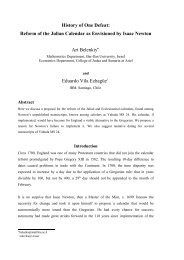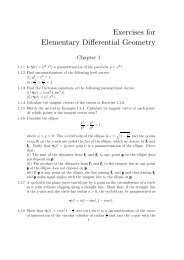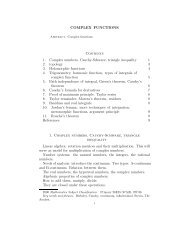Resolving Uncertainty: A Unified Overview of Rabbinic Methods
Resolving Uncertainty: A Unified Overview of Rabbinic Methods
Resolving Uncertainty: A Unified Overview of Rabbinic Methods
You also want an ePaper? Increase the reach of your titles
YUMPU automatically turns print PDFs into web optimized ePapers that Google loves.
takes a piece from a mixed pile <strong>of</strong> pieces <strong>of</strong> chamets and <strong>of</strong> matzah, in a manner such<br />
that the principle <strong>of</strong> kavua would apply, into a house which has been inspected for<br />
Pesach, the house must be re-inspected. But if it took a single piece <strong>of</strong> which has an<br />
even chance <strong>of</strong> being chamets or matzah into the house – this is a safek – the house<br />
need not be re-inspected (Pesachim 9a as understood by Rambam Hil. Chamets u-<br />
Matzah 2:10-11). In the case <strong>of</strong> safek, we can presume that an inspected house remains<br />
free <strong>of</strong> chamets since one possible resolution <strong>of</strong> the uncertainty regarding the<br />
subsequent events is consistent with this presumption. In the case <strong>of</strong> kavua, however,<br />
there is no uncertainty to resolve. Rather, some object <strong>of</strong> known mixed status has<br />
certainly been brought into the house; this is enough to nullify the presumption.<br />
Now that we have established that cases <strong>of</strong> kavua are not cases <strong>of</strong> safek, which cases<br />
are in fact safek? The status <strong>of</strong> an object is safek when it is not judged as part <strong>of</strong> a set<br />
(so that kavua and bitul do not apply) and it has not been removed from a set with a<br />
majority (so that parish does not apply) 17 and it does not belong to some reference<br />
class for which some statistical law is known (so that RDLK does not apply). A clean<br />
example <strong>of</strong> safek is one in which a piece <strong>of</strong> meat is found in the street and might have<br />
come from one <strong>of</strong> two stores, one kosher and one non-kosher.<br />
Actually, few cases <strong>of</strong> safek are that neatly symmetric. In the following sections, we<br />
will deal with two types <strong>of</strong> asymmetric safek, safek haragil and sfek sfeka, and see which<br />
types <strong>of</strong> asymmetries matter and which don't.<br />
17<br />
Recall, though, that RDIK resolves uncertainty but does not dispel it. On this basis, Shev Shmaatse<br />
(2:15) argues that certain Talmudic references to safek, such as safek asiri (BM 7a) and safek mamzer<br />
(Kidushin 73a), include cases <strong>of</strong> RDIK. This claim serves as the starting point for a great deal <strong>of</strong><br />
"yeshivishe torah" but is not essential for an understanding <strong>of</strong> the underlying issues.


